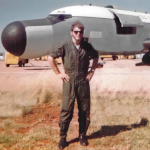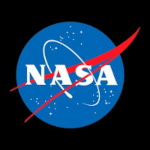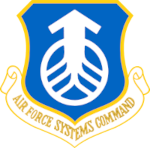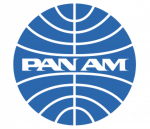




Apollo/Range Instrumentation Aircraft Support of Apollo 17
Michael Zeitfuss - ARIA Communications System Engineer - Pan American World Airways - Aerospace Services Division
ARIA Support of Apollo 17 Reentry
ARIA #2 (TN328) was assigned responsibility to cover Apollo 17 reentry from earth interface (defined as 400kft altitude; approximately 1200 miles up-range from splashdown) to entry of blackout. ARIA #2 departed Hickam AFB at 1455Z/19Dec1972 and proceeded to its Test Support Position (TSP) located 1160nm southwest of Honolulu at 06-42N/172-37W. Links 2287.5 MHz (USB) and 243.0MHz were recorded from the Apollo 17 Command Module (CM). Acquisition of signal (AOS) occurred as planned at 1859:30 Z. Good quality data and voice relay was obtained until abrupt loss of signal (LOS) at start of blackout at 1911:56Z. ARIA #2 recovered to Hickam AFB landing at 2205Z/19Dec1972. ARIA #2 was on the ground at Hickam awaiting the recovery of the moon rocks and astronaut bio-samples until 21Dec. ARIA #2 departed Hickam at 1425Z/21Dec and landed at Ellington AFB outside of Houston, TX where the bio-samples were transferred to NASA. ARIA #2 then departed Ellington AFB for PAFB, but the aircraft lost its APN-59 weather radar as it was approaching a severe line of thunderstorms. The pilot in command decided to make a precautionary landing at Barksdale AFB to get the radar fixed, landing at 0512Z/22Dec1972. ARIA #2 departed Barksdale at 1715Z/22Dec and landed at Patrick AFB at 1905Z/22Dec1972 (28+40 after departing Hickam).
ARIA #3 (TN326) was assigned responsibility to cover the Apollo 17 reentry from exit blackout to near splashdown when the CM would be over the horizon to their location. ARIA #3 departed Nandi International at 1620Z/19Dec1972 and proceeded to its assigned Test Support Position (TSP) located ~1000nm NNE of the Fiji Islands at 12-24S/166-20W. ARIA #3 started its data and voice relay support run at 1910Z. Acquisition of signal (AOS) occurred at 1915:59Z. Good quality data and voice relay was obtained from the 2287.5 and 243.0 links until LOS at 1920:20Z. ARIA #2 recovered to Nandi International landing at 2145Z/19Dec1972. After RON ARIA #3 departed Nandi at 1455Z/20Dec and proceeded to Hickam for refueling and then continued non-stop from Hickam to Patrick AFB landing at 1440Z/21Dec1972.
ARIA #4 (TN329) was assigned responsibility to cover the Apollo 17 reentry overlapping coverage with ARIA #3 from exit blackout to CM splashdown and continuing coverage of the CM until released by NASA. ARIA #4 departed Nandi International at 1610Z/19Dec1972 and proceeded to its assigned Test Support Position (TSP) located ~1000nm east of the Fiji Islands at 18-13S/165-08W. ARIA #4 started its data and voice relay support run at 1909Z. Acquisition of signal (AOS) occurred at 1916:35Z. Good quality data and voice relay was obtained from the 2287.5 and 243.0 links until LOS at 1924:43Z. At the request of NASA ARIA #4 remained on station for an additional 42 minutes after splashdown in order to provide astronaut voice relay. ARIA #4 recovered to Nandi International landing at 2226Z/19Dec1972. After RON ARIA #4 departed Nandi at 1713Z/20Dec and landed at Hickam at 0100Z/21Dec. After 17 hours on the ground in Hawaii, ARIA #4 departed Hickam AFB at 1800Z/21Dec and proceeded non-stop to Patrick AFB (~4200nm) landing 8h+22m later at 0222Z/22Dec1972.

Figure 9: Relative positions of the three ARIA for support of Apollo 17 reentry (19Dec 1972)


Figure 10: NASA Houston Mission Control plotboard shows the path of Apollo 17 reentry to splashdown

Figure 11: ARIA #2, # 3, and #4 Telemetry and Voice Relay Requirements and Coverages for Apollo 17 Reentry (19December 1972)
Splashdown of the Apollo 17 Command Module (Figure 11) ended what was arguably one of the most ambitious, technologically challenging, and successful efforts in the history of man. The ARIA supported all of the Apollo missions. The ARIA program never lost a crewman, never lost an aircraft, supported all of the missions, and met all of the data requirements. By any measure the ARIA program was a success.

Figure 11: The Apollo 17 spacecraft, containing astronauts Eugene A. Cernan, Ronald E. Evans, and Harrison H. Schmitt, glided to a safe splashdown at 2:25 p.m. EST on Dec. 19, 1972, 350nm southeast of American Samoa. (NASA)